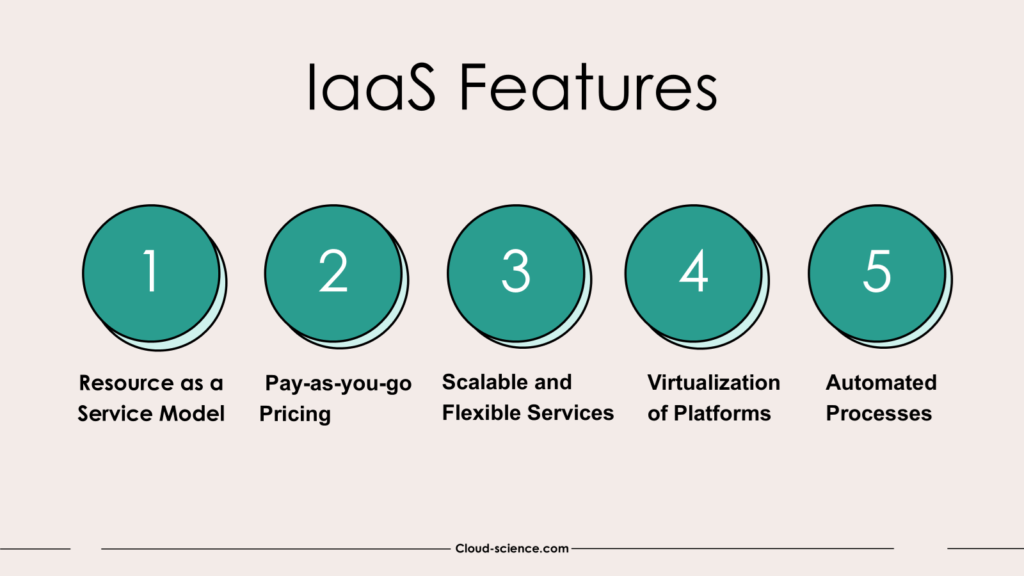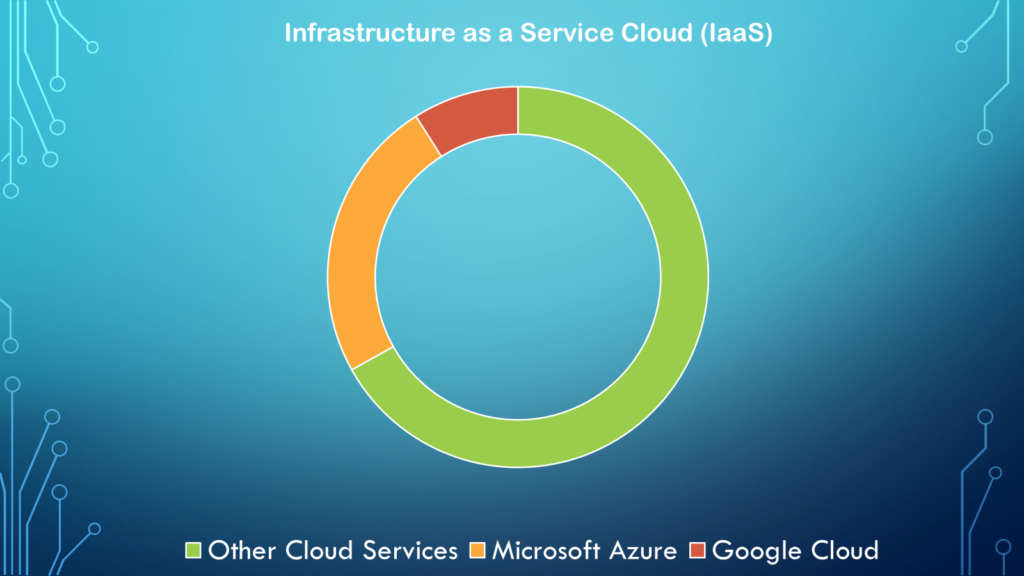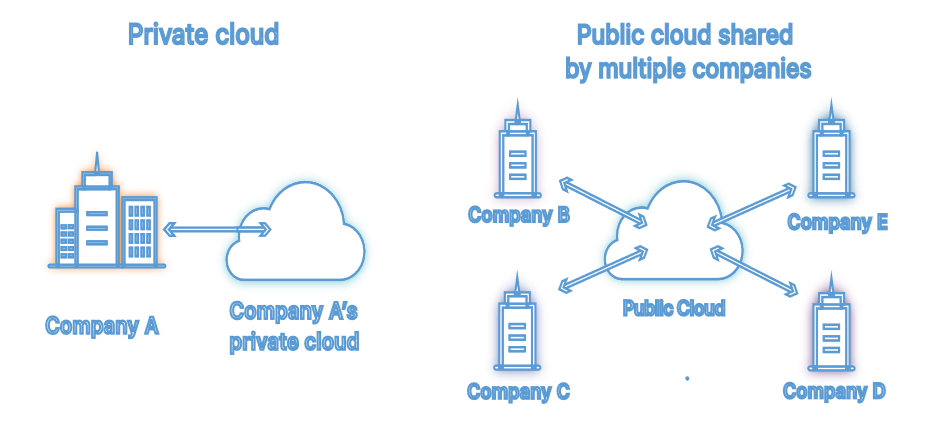“Have you ever come across a position where you feel like your computer is preventing you from achieving your dreams?”
You have the wish to create an innovative application or a revolutionary website, but you can’t help but think about battling unreliable technology and paying for many servers
You don’t have to worry now as in the world of cloud computing IaaS or Infrastructure as a Service will take away all your uneasiness. It is like entering a world where you can do away with data centers and instead rent all the computing power you need. It works simply; pay only for what you use! Embrace yourself to explore the potential of IaaS to transform your attitude towards technology as we delve into this exciting world!
This blog will talk in detail about the architecture, features, and functionality of IaaS and how it can be a game-changer for your company. So, without further ado let’s begin with the guide on how to leverage IaaS for your benefit!
What is Infrastructure as a Service or IaaS?
Preserving the traditional way of computing in the contemporary world is as good as preaching in a phone booth with the advent of mobile phones. Those who are familiar with innovative and modern solutions tend to be more successful. In case you are stuck in the past and fail to take your business to new levels, IaaS might be the ideal solution for you. Switch to on-demand and flexible services instead of wasting time on hefty maintenance systems and large servers.
With IaaS choose the computing power according to your needs, from secure storage to virtual servers, and pay only for what you use. Get rid of old equipment struggles and minimize resource wastage.
When things fall right into place, you will be able to scale back down and maintain all your expenditures using IaaS. It’s similar to having the latest technology at your disposal without having to put in huge sums in a fully functioning data center. IaaS works like a magic utility belt ready to bring your company’s dreams to reality. IaaS may provide a plethora of advantages to enterprises, such as the ability to move forward, simplify processes, adapt to changes, and reduce costs associated with workloads. Prepare to step out from the phone booth and enter the innovative IaaS era of technology!
What kind of architecture does IaaS have?
IaaS architecture is the hidden force that is behind the magic of cloud computing. IaaS acts like one huge virtual data center that provides you with all kinds of servers, storage, and strong networking. You can rent any of the resources you wish to use, from virtual servers to safe and secure storage. It will be much easier than buying and looking after your hardware. This feature is vital since it allows you to get a hold of your expenses by scaling up in the case of large projects or scaling down for slower times.
Example:
IaaS allows you to rent virtual servers, secure storage, and networking resources instead of buying and maintaining your own physical hardware. This means you can scale up resources for larger projects or scale down during slower times, helping manage costs. Additionally, policy-driven automation lets your resources grow automatically according to demand, ensuring efficient performance for your applications.
The building blocks of IaaS infrastructure are networking, storage, and servers. Apart from these you also get to benefit from different services, including management tools, scalability, and automation.
Consider them as the solutions and services that help to keep your virtual data center operating with efficiency. You can benefit from strong security features that aid you in protecting your data. Then there are management tools to analyze usage and personalize your resources, and automation options that simplify all processes to make your life easier.
Policy-driven automation can render IaaS even more powerful in the future. It is like establishing rules that will allow for the automatic growth of your resources according to demand, guaranteeing optimal and efficient performance for your apps. You will be able to utilize the cloud’s capabilities to create, deploy, and maintain your apps with ease by being aware of the essential elements and services of Infrastructure as a Service (IaaS) architecture.
What is the working principle of IaaS?
IaaS focuses on the provision of virtualized computing functions as a service over the Internet. The users can avoid the hassles of purchasing and holding physical servers and hardware resources but can use resources such as network storage, virtual machines and others on lease per their needs.
1. Efficient Use of Computing Power:
IaaS eliminates the need for massive servers and constant maintenance by allowing you to rent only the computing power you require, reducing hardware demands significantly.
2. Virtualized Resources and Seamless Operation:
IaaS offers virtual computers, storage, and hardware as a flexible “toolbox” accessible over the internet. Providers like Google Cloud and Amazon Web Services handle everything from performance evaluation to data security and application operation, ensuring smooth project execution
What are some distinctive features of IaaS?

IaaS or Infrastructure as a Service possesses some striking and distinctive features that make it a preferred choice for tech freaks. For software developers or IT firms seeking to use a cloud-based model that handles their IT infrastructure demands, Infrastructure as a Service (IaaS) provides a scalable, flexible, and dynamic alternative.
1. Resource as a Service Model:
Resources-as-a-service is the foundational stone of the cloud service framework. The cloud service architecture helps individuals and enterprises to easily access and set up IT infrastructure with a convenient and affordable subscription-only payment model. This helps you save your money on the initial, upfront expenditures involved with setting up and handling a data center or server room.
2. Pay-as-you-go Pricing with IaaS:
Just picture having to pay more than the electricity that you use! Sounds frustrating, right? But the pay-as-you-go pricing model of Infrastructure as a Service (IaaS) alleviates these kinds of concerns. It allows you to have access to computing resources like virtual servers and storage according to your unique demands.
It sure is different from traditional IT services that incur high upfront expenses. It’s the perfect match for small enterprises since you just pay for what you use. For organizations that want to alter tech demands without breaking the bank, IaaS is a game-changer due to its flexibility and cost-efficiency.
3. Scalable and Flexible Services:
How do you feel if you’re carrying out a crucial task on your computer and it has to be updated? Quite disruptive, huh? IT departments with separate data centers have to deal with this daily. They need to upgrade and maintain servers regularly. This may cause them to go offline and interfere with your work. However, IaaS is like having a super-talented IT staff look after everything.
When you go for IaaS, then you don’t have a reason to be concerned about server management and newer updates. All of this complex stuff happens in the back end and does not interrupt your work. Your computer continues to do its work flawlessly even when it receives significant updates—it’s almost magical!
4. Virtualization of Platforms:
It is like operating several autonomous and distinct computers on just one large computer. This prevents enterprises and companies from interfering with one another when testing new ideas or working on various operations. It plays a crucial role in Infrastructure as a Service (IaaS) as well. IaaS enables you to scale up your projects without buying a whole new computer system because you can easily rent out your preferred virtual machines as needed. Consider it your all-purpose, very versatile toolkit for all things IT!
5. Automated Processes:
IT departments might disrupt work schedules since they spend much time on regular server maintenance, fixes, and upgrades. However, IaaS (Infrastructure as a Service) functions much like a team of computer whizzes handling everything in the background. IaaS companies never take your computer down as they handle all the server upgrades and do the maintenance tasks automatically. It works most magically: you can fully concentrate on your job, and the staff providing IaaS services will handle all the technical details to keep everything up and running smoothly.
How do you implement IaaS Cloud Service?
There are certain things you need to consider while choosing the best IaaS service for you. It takes a good deal of preparation to choose an IaaS cloud service for you. Get familiar with your needs as a business in the first place. Then consider what will you use the cloud for, what amount of processing power will you require, and to what extent security is vital. Then thoroughly go over the intricate technical details. Think about the fact that how simple it is for you to access cloud apps and data. Assess your alternate choices for storage, including object-based storage for massive data sets, speedier solid-state drives, and traditional hard disks.
To ensure that you achieve scalability for future development, carefully choose virtual servers with CPU and memory configurations that align with the demands of your application. Security is an important aspect to consider, so make sure to satisfy yourself with the appropriate certifications, access limits, and sturdy encryption. Disaster recovery options are essential to handling corporate operations when there are any interruptions.
Also, keep the user experience well in mind. It should not be difficult for you to control and manage the cloud service. Pricing should depend on what services you choose to use. Make sure to pick a service that doesn’t come in your pre-determined budget so you can avoid paying extra charges. AWS, GCP, and some other providers are available in the IaaS market. To monitor their services, research them thoroughly, go through customer reviews, and take advantage of free trials.
What are some benefits of using IaaS?
With the advent of cloud computing, the online domain has undergone major changes. The corporate processes are simplified and chances of error are significantly reduced. Apart from this, there are many other benefits of using cloud-based services such as IaaS. Here, we will talk about some exciting benefits of IaaS and why should you use this service
1. Cost-effective:
IaaS has the potential to reduce costs as you will not have to buy, handle, and support the underlying infrastructure of IaaS. Companies now need to take the items they require on lease or rent to enjoy all the services they want.
2. Faster and Effective Deployment:
As compared to conventional in-house infrastructure deployment or hefty data centers, IaaS enables you to save your time as the setup process is easy.
3. Unmatched Scalability:
IaaS does not bind you and prevents you from regretting wrong decisions. Using these innovative services, it is simple to scale resources up or down according to shifting demands and dynamics. This makes it perfect for workloads that are transitory, experimental, or variable.
4. Pay-as-you-go model:
Software and Hardware as-a-service helps remove all upfront capital expenditures that might be a burden on you. Companies usually get to pay by the hour, week, or month for the resources that they utilize.
5. Flexibility:
Companies can decide to lease computing power from a service such as IaaS or execute tasks on their private systems. The choice depends on their willingness to spend and the amount of control they require over the system.
What are some disadvantages you might face while using IaaS?
Despite all the benefits and perks that IaaS possess, there is always some room left for improvement. Here, we will point out a few disadvantages of this cloud-based service that would annoy you a bit. Let us see some of them:
Unprecedented Expenses
The costs associated with IaaS may be quite thorough and burdening when assessing the function of each resource. Businesses may go through a sort of “sticker shock” if the amount in the end is more than they could ever anticipate.
Limited Access and Visibility
Because IaaS providers look after the infrastructure, companies may not be able to fully comprehend how it works or the reasons behind events. This may make the process of troubleshooting more of a mess.
Increased Reliance on Provider
Your company may have to suffer from any outages, interruptions, or performance problems experienced by the IaaS provider.
Uncertain Performance
In an IaaS environment, different organizations can easily share resources, thus there is a chance that your workload may be effectively slowed down by a busy neighbor.
Security Concerns
Some firms have been vocal about facing security issues while sharing resources with other enterprises.
What are some major IaaS products?

There are many examples of IaaS providers and goods. The top three public cloud service providers, Google, Microsoft, and Amazon Web Services (AWS), also offer a plethora of IaaS services. Let us have a look at them.
- AWS provides computation services, such as its Elastic Computation Cloud (EC2), and storage services, such as Simple Storage Service (S3) and Glacier.
- Google Compute Engine is a computing and storage service provided by Google Cloud Platform (GCP).
- Cloud virtualization is available with Microsoft Azure Virtual Machines for a variety of cloud computing uses.
These represent only a tiny amount of the never-ending array of services provided by some of the most renowned IaaS providers. Services may involve big data computing settings, access to databases, evaluation, logging, and server-less functions like AWS Lambda, Azure Functions, or Google Cloud Functions.
When it comes to the IaaS industry, there is a list of other smaller or more specialized providers, such as these products:
- Rackspace Managed Cloud
- IBM Cloud Virtual Servers
- Alibaba Cloud Elastic High-Performance Computing (E-HPC)
- DigitalOcean Droplets
- IBM Cloud Private
- Alibaba Elastic Compute Service
- Alibaba Elastic GPU Service (EGS)
- CenturyLink Cloud;
Before going for any provider, users must consider all the services, pricing, and reliability. They should also be ready to choose a different provider and, if required, redeploy to a different infrastructure.
Final Words: IaaS
Businesses that wish to have a flexible and cost-effective solution to manage their IT infrastructure will find an attractive alternative in IaaS. You will have the chance to take advantage of its scalability, convenient pricing model, and faster deployments when you are familiar with your business requirements and thoroughly screening all the IaaS suppliers.
However, you should not forget the possible disadvantages that come with the provider, such as intricate and complex payment arrangements, restricted access, and reliance on the infrastructure of the supplier. IaaS may, in the end, be a useful tool for companies of all sizes, but it’s important to consider all the advantages and disadvantages before deciding if it’s the best option for your particular requirements.



